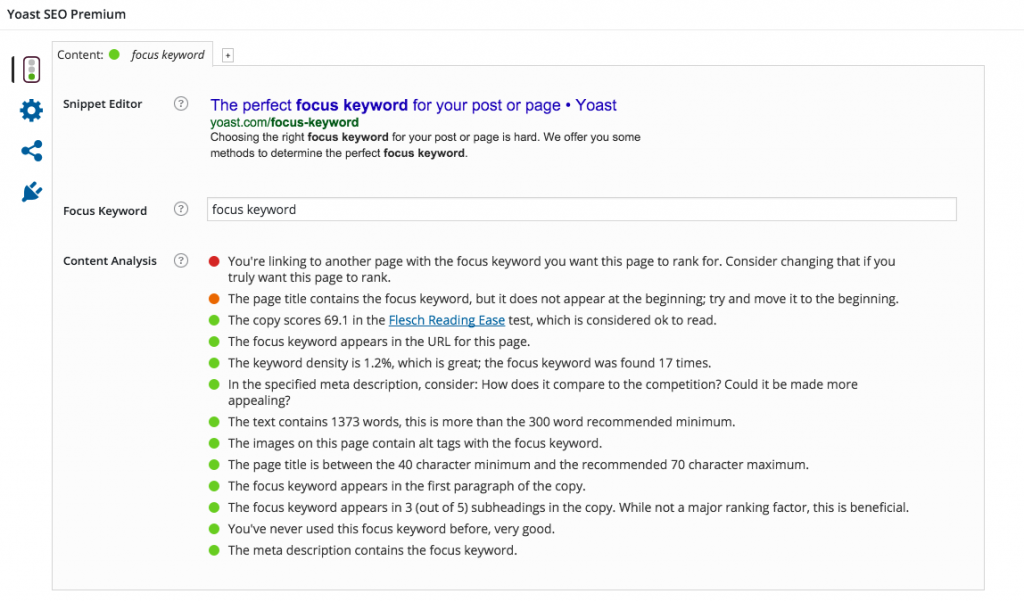Your title tags are one of the most important parts of your website. This is the part of your website that tells the search engine what that specific web page is about. It is going to dictate whether it is initially considered for inclusion in relevant search engine results. If you have just been randomly generating your title tags, you are likely doing your website an injustice.

While you might occasionally accidentally stumble across a tag that helps your page rank well, intentionally written tags with the right structure can help your website rank faster and can even help encourage more people to click on your website’s link in those search results. Starting from the beginning, here is what you need to know about title tags and their structure.
What Is a Title Tag?
The title tag is a type of meta tag. Your meta tags are HTML elements that provide information about your site to both search engines and visitors. In old-school HTML coding, the title tag would likely be the first visible element on a webpage and even with today’s advanced coding methods, this is still one of the first elements on most pages. A good comparison for title tags on your web pages would be chapters in a book. It is at the head of the page, shows up in the tab of your browser, and should contain keywords that help to confirm to both your visitor and to search engines that the page they’ve clicked on is a page relevant to their search.
The golden rule of title tags is this: write them first for the human searchers, not just for search engines. You should, however, format your title tags for search engines to find. Keep in mind that there are thousands of different ways to write effective title tags. The only way that you will really know what works for you is to test, test, and test again.
What Does a Title Tag Look Like?
Written in HTML, your title tag will likely look something like: The Words of The Title Here. When displayed by a browser, the title tag will usually be in the tab of the browser, not necessarily at the very head of the page.

Sometimes, the title of that page might not actually occur anywhere on that page, though it is a good idea to include them somewhere on the page, just for continuity.
Google displays the title tag as the blue link that searchers will be clicking on if they want to navigate to your page. This is why writing the tag itself with your human searchers in mind is so important. You can format a title tag perfectly for SEO, but if it is nonsensical to human readers, it is not going to be effective. It is the most important tag on your page, so think about it carefully.
What Structure Do My Title Tags Need to Have?
As you are starting to write your title tags, here are the elements that you need to keep in mind in order to ensure that the structure of that tag is as good for human readers as they are for search engines:
• The right length – Title tags should be no longer than seventy characters. An important number to keep in mind is Google’s maximum title threshold of around 65 characters. Keep in mind that characters include spaces. Any longer, and the tag will be too long to be included in full in search results, which means it is less likely to be clicked on.
• Keyword usage – Your title tag is one of the most important places on your website to use a keyword. Use your most important keywords first, followed by your least important keywords. It is important to remember that you do not want to stuff your title tag with keywords, just to try to improve your rank. This will look bad to your readers, so bad in fact that they might pass your website over, mentally aligning it with spam. If you are trying to rank for two keywords that are similar, for example, tennis shoes and running shoes, you do not need to include both of those  words in full. A title tag like “Tennis and Running Shoes” will be more effective than “Tennis Shoes, Running Shoes, Many Types of Shoes.”
words in full. A title tag like “Tennis and Running Shoes” will be more effective than “Tennis Shoes, Running Shoes, Many Types of Shoes.”
• Shorten your wording – Phrases should be short and easy to understand. Your titles, in general, should not be full sentences. Not only will it be difficult to include your keywords if you are using full sentences, it will probably not be as enticing to read as shorter, phrase-based titles. Unless the page you are formulating a title for is a blog post that uses a full sentence as its title, use something shorter and sweeter instead.
• No duplication – As with most parts of your website, Google hates duplicate content. All search engines really hate duplicate title tags. If two of your pages have the same title tag, those pages should likely be one page, instead of two separate ones. You will not do yourself any favors by replicating your titles all together.
• Relevancy – Finally, the most important part of your title tags is their relevancy. Are they actually relevant to the content on that page? They must describe what that page is for and utilize the same keywords as that page is optimized for.
Tools You Can Use
There are a number of tools that you can use to ensure that you are properly optimizing and structuring your website Title Tags.
If you’re using WordPress, SEO by Yoast is a favorite of ours and one that we definitely recommend. The easy to use plugin allows you to preview what the Title Tag will look like in SERP’s, and also tells you where and how you can improve your use of keywords on the page and description.

EZ Local offers a Title Tag length tool to help you keep the length within search engine boundaries, you can find it here: EZ Local Title Tag Counter.
Conclusion
At any rate, following these guidelines listed above will help you to not only improve your search engine rankings, but will also help with your website conversion rates and and sales.
Now it’s your turn. What Title Tag tricks have you found success with on your own websites? Let us know in the comments below.
Cheers!
Your title tags are one of the most important parts of your website. This is the part of your website that tells the search engine what that specific web page is about. It is going to dictate whether it is initially considered for inclusion in relevant search engine results. If you have just been randomly generating your title tags, you are likely doing your website an injustice.

While you might occasionally accidentally stumble across a tag that helps your page rank well, intentionally written tags with the right structure can help your website rank faster and can even help encourage more people to click on your website’s link in those search results. Starting from the beginning, here is what you need to know about title tags and their structure.
What Is a Title Tag?
The title tag is a type of meta tag. Your meta tags are HTML elements that provide information about your site to both search engines and visitors. In old-school HTML coding, the title tag would likely be the first visible element on a webpage and even with today’s advanced coding methods, this is still one of the first elements on most pages. A good comparison for title tags on your web pages would be chapters in a book. It is at the head of the page, shows up in the tab of your browser, and should contain keywords that help to confirm to both your visitor and to search engines that the page they’ve clicked on is a page relevant to their search.
The golden rule of title tags is this: write them first for the human searchers, not just for search engines. You should, however, format your title tags for search engines to find. Keep in mind that there are thousands of different ways to write effective title tags. The only way that you will really know what works for you is to test, test, and test again.
What Does a Title Tag Look Like?
Written in HTML, your title tag will likely look something like: The Words of The Title Here. When displayed by a browser, the title tag will usually be in the tab of the browser, not necessarily at the very head of the page.

Sometimes, the title of that page might not actually occur anywhere on that page, though it is a good idea to include them somewhere on the page, just for continuity.
Google displays the title tag as the blue link that searchers will be clicking on if they want to navigate to your page. This is why writing the tag itself with your human searchers in mind is so important. You can format a title tag perfectly for SEO, but if it is nonsensical to human readers, it is not going to be effective. It is the most important tag on your page, so think about it carefully.
What Structure Do My Title Tags Need to Have?
As you are starting to write your title tags, here are the elements that you need to keep in mind in order to ensure that the structure of that tag is as good for human readers as they are for search engines:
• The right length – Title tags should be no longer than seventy characters. An important number to keep in mind is Google’s maximum title threshold of around 65 characters. Keep in mind that characters include spaces. Any longer, and the tag will be too long to be included in full in search results, which means it is less likely to be clicked on.
• Keyword usage – Your title tag is one of the most important places on your website to use a keyword. Use your most important keywords first, followed by your least important keywords. It is important to remember that you do not want to stuff your title tag with keywords, just to try to improve your rank. This will look bad to your readers, so bad in fact that they might pass your website over, mentally aligning it with spam. If you are trying to rank for two keywords that are similar, for example, tennis shoes and running shoes, you do not need to include both of those  words in full. A title tag like “Tennis and Running Shoes” will be more effective than “Tennis Shoes, Running Shoes, Many Types of Shoes.”
words in full. A title tag like “Tennis and Running Shoes” will be more effective than “Tennis Shoes, Running Shoes, Many Types of Shoes.”
• Shorten your wording – Phrases should be short and easy to understand. Your titles, in general, should not be full sentences. Not only will it be difficult to include your keywords if you are using full sentences, it will probably not be as enticing to read as shorter, phrase-based titles. Unless the page you are formulating a title for is a blog post that uses a full sentence as its title, use something shorter and sweeter instead.
• No duplication – As with most parts of your website, Google hates duplicate content. All search engines really hate duplicate title tags. If two of your pages have the same title tag, those pages should likely be one page, instead of two separate ones. You will not do yourself any favors by replicating your titles all together.
• Relevancy – Finally, the most important part of your title tags is their relevancy. Are they actually relevant to the content on that page? They must describe what that page is for and utilize the same keywords as that page is optimized for.
Tools You Can Use
There are a number of tools that you can use to ensure that you are properly optimizing and structuring your website Title Tags.
If you’re using WordPress, SEO by Yoast is a favorite of ours and one that we definitely recommend. The easy to use plugin allows you to preview what the Title Tag will look like in SERP’s, and also tells you where and how you can improve your use of keywords on the page and description.

EZ Local offers a Title Tag length tool to help you keep the length within search engine boundaries, you can find it here: EZ Local Title Tag Counter.
Conclusion
At any rate, following these guidelines listed above will help you to not only improve your search engine rankings, but will also help with your website conversion rates and and sales.
Now it’s your turn. What Title Tag tricks have you found success with on your own websites? Let us know in the comments below.
Cheers!

